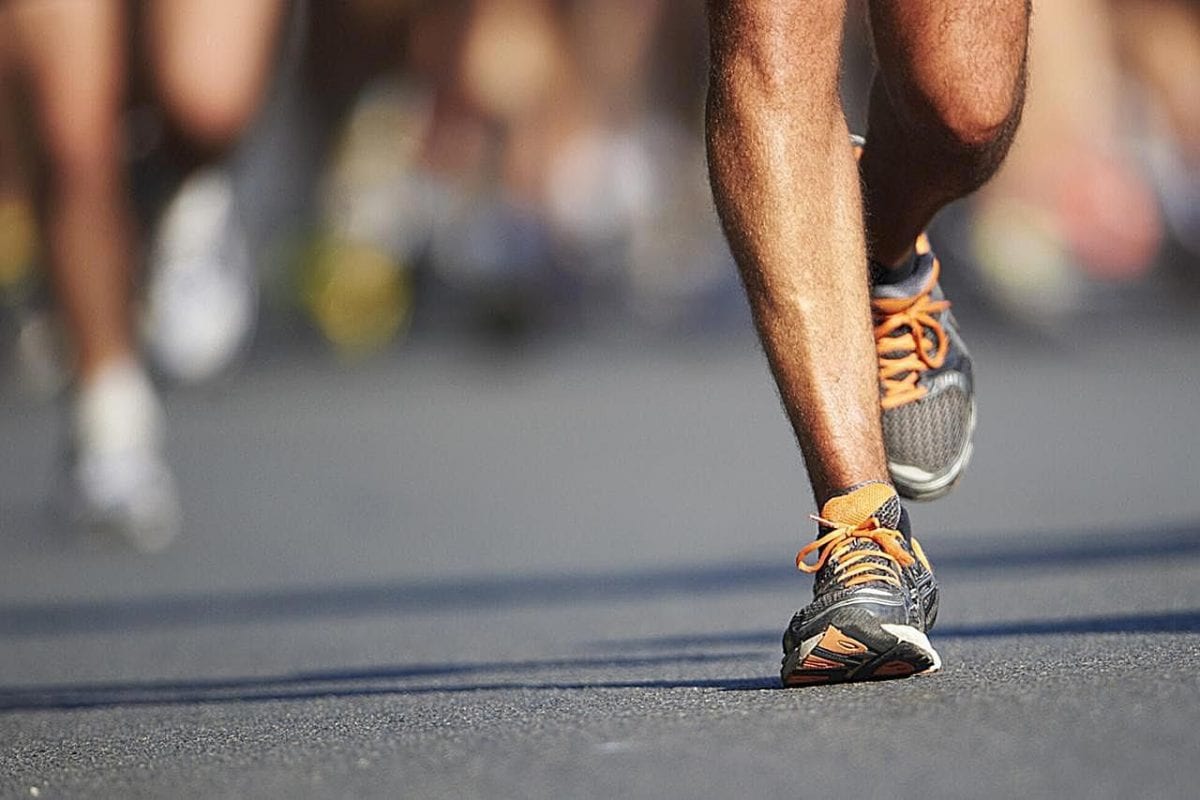During the summer months, runners from across the city have been enjoying the beautiful summer weather. Well by beautiful this year, I mean rainy and enjoyment is all personal perspective. So, let me start again; Edmontonian runners have been making the best of what our monsoon-like summer has had to offer. Most runners by this point on the calendar are well into their training programs and with increased weekly distances usually comes with management of small injuries including shin splints. If you are anything like me, managing, understanding, and trying to mediate my current problems is as important as the weekly distance and training goals.
Description and Epidemiology
Running is a popular spring/summer physical activity as it’s inexpensive, convenient, and of course, a great way to improve your cardiovascular system. However, it is suggested that there are incident rates of 11%-85% and 2.5-38 injuries per 1000h of running (Wiegand et al., 2019). Medial tibial stress syndrome, also known as shin splints, has been found in one study to occur in 22% of runners (Wiegand et al., 2019).
Medial tibial stress syndrome (MTSS) is defined as “shin pain resulting from injury of the shin from overuse or repetitive stress” (Patel, Roth, & Kapil, 2011). Shin splints are common in runners but can occur in any sports or activity involving repetitive jumping and dynamic movements. It is common in runners later in the training season but has also been found common in an increase in training during the early season after a sedentary period during the off-season.
There is a broad spectrum of tibial stress injuries that may be involved in contributing to shin splints: including tendinopathy, periostitis, and stress reaction of the tibia (Brewer & Gregory, 2012). This spectrum can also include muscle dysfunctions of the tibialis anterior, tibialis posterior, gastrocnemius, and soleus (Brewer & Gregory, 2012).
Risk Factors
Although research suggests many different risk factors, the most considerable supported risk is a history of the previous injury (Newman, Witchalls, Waddington, & Adams, 2013; Wiegand et al., 2019). Meaning if you have had shin splints before, you have the highest risk of getting it again compared to someone who has never had it before. Many other risk factors research suggests are fewer years of running experience, female sex, increased body mass index (BMI), more significant navicular drop and previous use of orthotics (Newman et al., 2013).
Diagnosis and Differential Diagnosis
Remember, many different things can cause medial shin pain and, as suggested above, many various risk factors can lead to a different diagnostic hypothesis in individual cases. The first step I would recommend is going to see a Physical Therapist (PT) who can run a full assessment to get a better idea of the case and work towards the unique goals of the individual. Not everyone’s goal is to run a marathon or even an Ultra, maybe it’s to run a couch to 2-5km race. Remember, you are at the center of the patient care model so addressing your expectations and goals of treatment will allow the PT to work with you to form specific, measurable, achievable, realistic and timely goals also known as SMART goals.
If conservative treatment has not resolved the issue and relieved the pain in a reasonable time frame, your MD may order a 3-phase bone scan to rule out a stress fracture (Edwards, Wright, & Hartman, 2005; Moen, Tol, Weir, Steunebrink, & De Winter, 2009).
Management
Conservative treatment and management of medial tibial stress syndrome is suggested and is often successful (Edwards et al., 2005). Management suggested may include but is not limited to (Edwards et al., 2005):
- 2-3weeks of rest, activity modification, or decreased training (activity modification to continue with cardiovascular fitness but reduce stress to lower extremities can include biking, swimming, deep water running/ water aerobics.
- Nonsteroidal anti-inflammatory drugs (NSAID) to reduce pain
- Ice to help reduce swelling, and can be an analgesic
- Physical Therapy and modalities
Mid-level evidence also suggested that orthotics may not improve symptoms of patients dealing with medial tibial stress syndrome (Johnston et al., 2006). In other words, this study does not support the use of orthotics to manage shin splints.
From a personal opinion as an adjunct to what is listed above, which has my own biases, I have found that a home exercise plan including stretching of the lower extremity (LE) and strengthening of the LE, hips, and core, can be helpful.
Stretching should be done when you are warmed up (light sweating) or at the end of the exercise. A few of my favourites stretches include:
- Standing Gastrocs/ Soleus stretch; hold for 45sec – 1min
- Hamstring stretch; hold for 45sec – 1min
- IT band and TFL stretch; hold for 45sec- 1min hold
- Tibialis Anterior and posterior stretch; hold for 45sec- 1min
A few of my favourite strengthening exercises include:
- Theraband strengthening for the ankle (inversion, eversion, PF movements)
- Train your balance and proprioception: BOSU ball balance, Single-Leg balance (play around with your vision to make it harder), foam block balance. REMEMBER Quality over Quantity with these drills! Start low time high quality then progress from there.
- Gluteus Medius strengthening! Clamshells and monster walks are a great place to start
- Core stability: the sky is the limit for how many exercises for the core is out there. I like front planks, side planks, and bird dogs, to name a few
Author Bio
B r a n d y n P o w e l s k e – P T , B S c . M S c P T .
P h y s i c a l T h e r a p i s t , P u r s u i t o f M o t i o n P h y s i o t h e r a p y








